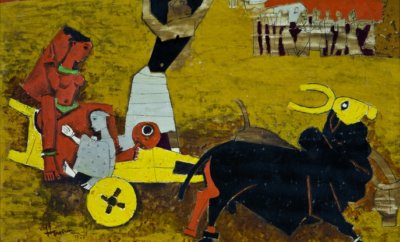India
900-Year Drought Wiped Out Indus Valley Civilization, Shows IIT Kharagpur Research

Excavated ruins of Mohenjodaro in Sindh, a site of Indus Valley Civilization.
Photo: Wikimedia Commons
Monsoon was weak from 2,350 BC till 1,450 BC in the region where Indus Valley civilization flourished, according to the research.
A 900-year drought was responsible for wiping out the Indus Valley Civilization 4,350 years ago, scientists at the Indian Institute of Technology (IIT), Kharagpur, have found, the Times of India reported. The evidence gathered during their study is a a significant development that reconfigures our understanding of the civilization and its progress, and also counters theories that said the drought lasted only for 200 years.
The Indus Valley Civilization was one of the most widespread of the ancient civilizations, covering present-day India, Pakistan and Afghanistan with an area of about 1.5 million sq km. It is known for its well-developed infrastructure, architecture, and metallurgy, besides having trade relations and cultural ties with other concurrent civilizations across the world.
The team at IIT Kharagpur, along with members from the Wadia Institute of Himalayan Geology, Dehradun, and the Institute of Estuarine and Coastal Research, Shanghai, China, mapped the variability of monsoon of 5,000 years in Ladakh’s Tso Moriri lake, which is situated in the Changthang plateau, a part of the larger Tibetan plateau geographically. It was fed by the same glacial source as the Indus river. The mapping identified periods that had continuous spells of good monsoon as well as the weak and negligible phases.
“The study revealed that from 2,350 BC (4,350 years ago) till 1,450 BC, the monsoon had a major weakening effect over the zone where the civilization flourished. A drought-like situation developed, forcing residents to abandon their settlements in search of greener pastures,” Anil Kumar Gupta, the lead researcher and a senior faculty of geology at the institute, was quoted as saying in the report.
The development, which will be published in the Quaternary International Journal by Elsevier this month, will also give an insight into the nature of migration across the Indian landmass and subsequent making of caste groupings and languages. Headquartered in New York, Elsevier is an information and analytics company and one of the world’s major providers of scientific, technical, and medical information.
The rains were absent from the Himalayas for 900 long years, as per researchers from geology and geophysics department. Monsoon playing truant, and dried up the source of water for the river along which the civilization thrived. This drove the inhabitants towards the east and south where the weather was better. The hardy inhabitants of the region gradually migrated to the Ganga-Yamuna valley towards eastern and central Uttar Pradesh; Bihar and Bengal in the east; and Madhya Pradesh, the south of Vindhyachal and south Gujarat in the south, Gupta added.
The first large-scale excavations of the civilization were conducted in the 1920s by British explorers. Researchers claimed in 2016 that the Indus Valley civilization began nearly 2,500 years earlier than thought, which means it began nearly 8,000 years ago, making it older than the Mesopotamian and Egyptian civilizations. The revelation prompted the debate over whether Middle-Eastern settlements can be considered as the “Cradle of Civilization.”



